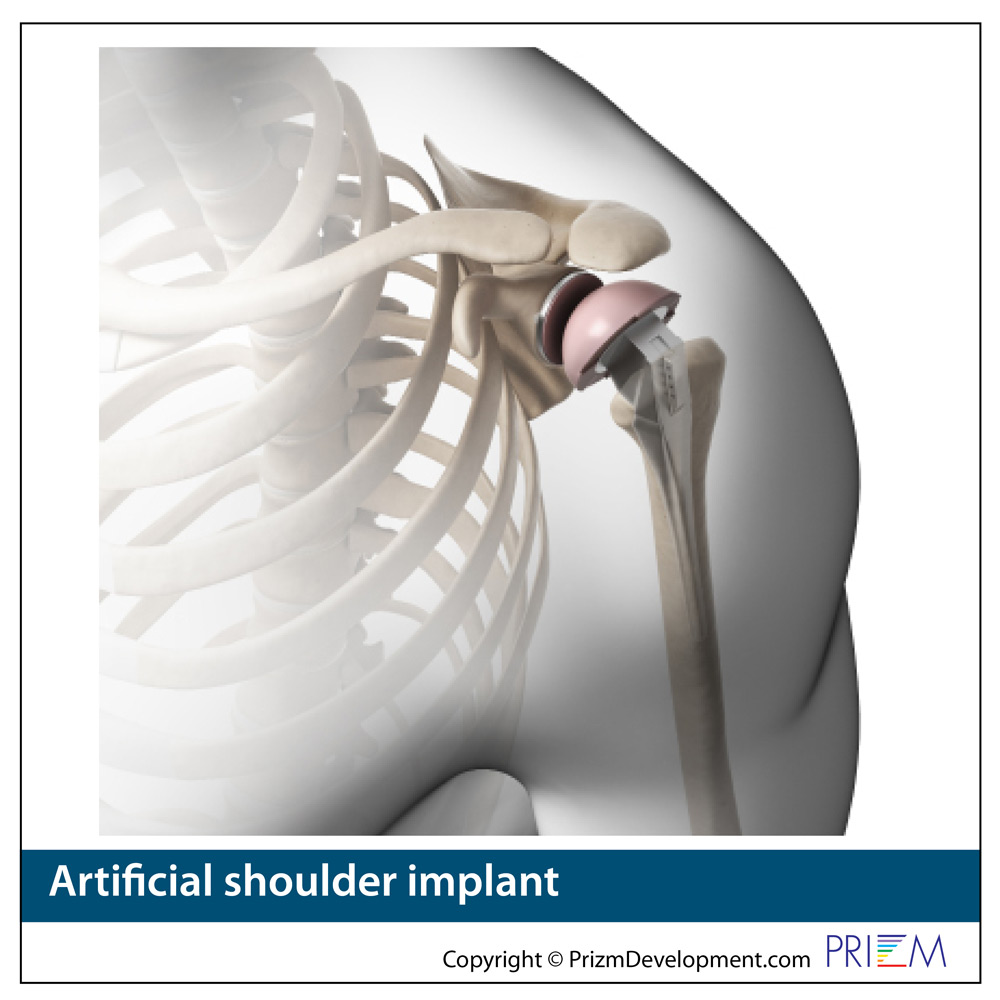Shoulder Replacement
 Total Shoulder Replacement Surgery
Total Shoulder Replacement Surgery
Arthritis or injury can also damage the shoulder joint preventing a person from lifting their arm. In severe cases, after nonsurgical treatment options have failed to provide relief of shoulder pain, the only treatment left is typically shoulder replacement surgery.
Lakelands Orthopedics performs both shoulder replacement surgery and reverse shoulder replacement surgery.
Shoulder replacement surgery has been around since the 1950s and was originally used for severe fractures, but because of its success, it has since been broadened to address arthritis and other shoulder joint problems that prevent pain free movement of the shoulder joint. Each year in the United States more than 50,000 people have shoulder replacement surgery. Patients with bone-on-bone contact are typically good candidates for shoulder replacement surgery. Loss of movement in the shoulder is the typical indication for shoulder replacement surgery.
Unlike hip replacement surgery which is often done on patients in their 50s and 60s, shoulder replacement surgery is often done on younger patients, those in their 30s and 40s.
Fewer people damage their shoulders to the extent that they need shoulder replacement surgery, as there are some non-surgical treatment options for shoulder joint pain. For example, according to the American Academy of Orthopaedic Surgeons, more than 900,000 people in the U.S. have knee replacement surgery and hip replacement surgery.
During shoulder replacement surgery, the shoulder replacement surgeon makes an incision in the shoulder and inserts an artificial ball and socket joint to replace the damaged shoulder joint.
Shoulder replacement surgery creates new joint surfaces by replacing the ends of bones in a damaged joint. The top end of your upper arm bone (humerus) is rounded at the top and shaped like a ball. Muscles and ligaments hold this ball against a cup-shaped part of the shoulder bone.
Shoulder replacement surgery involves the highly trained shoulder replacement surgeon replacing the ends of the damaged upper arm bone (humerus) and usually the shoulder bone (scapula) or capping them with artificial surfaces lined with plastic or metal and plastic.
The shoulder replacement surgeon will replace the top of the upper arm bone with a long metal piece, inserted into the upper arm bone, that has a rounded head.
If the cup-shaped surface of the shoulder bone that cradles your upper arm bone is also damaged, doctors smooth it and then cap it with a plastic or metal and plastic piece.
Sometimes specialized cement is used to hold joint components into place, and other times a specialized material is used that allows new bone to grow into the joint implant over time.
[Top]
Reverse Shoulder Replacement Surgery
Reverse shoulder replacement is another variation that was developed in the 1980s.
Reverse shoulder replacement is used for those with completely torn rotator cuffs or have had a shoulder replacement surgery that did not relieve symptoms or restore motion significantly. Reverse shoulder replacement surgery is also performed on people who have painful arthritis in their shoulder and damage to the muscles around the shoulder.
In reverse shoulder replacement surgery, the position of the ball and socket are reversed, where the ball is applied to the shoulder and the plastic socket is attached to the upper arm. This enables the person to lift the arm using a different muscle than the rotator cuff.
Reverse shoulder replacement surgery is not right for everyone and it requires an joint replacement surgeon with a high level of training and expertise. The surgery typically requires a fellowship-trained orthopedic surgeon to remove the damaged bone and then attach the artificial joint components to the shoulder bone.
As with nearly all joint replacement surgeries, the patient is under general anesthesia and unconscious during the entire surgery.
The joint replacement surgeon may require the patient to take antibiotics before and after the reverse shoulder replacement surgery to reduce the risk of infection. If the person needs any major dental work done in the immediate future, the joint replacement surgeon will recommend that you have it done before joint replacement surgery, because of the risk of infection spreading from other parts of the body, such as the mouth, to the artificial joint which can cause a serious and complex problem.
Click here to learn more about getting ready for joint replacement.

 Shoulder
Shoulder
